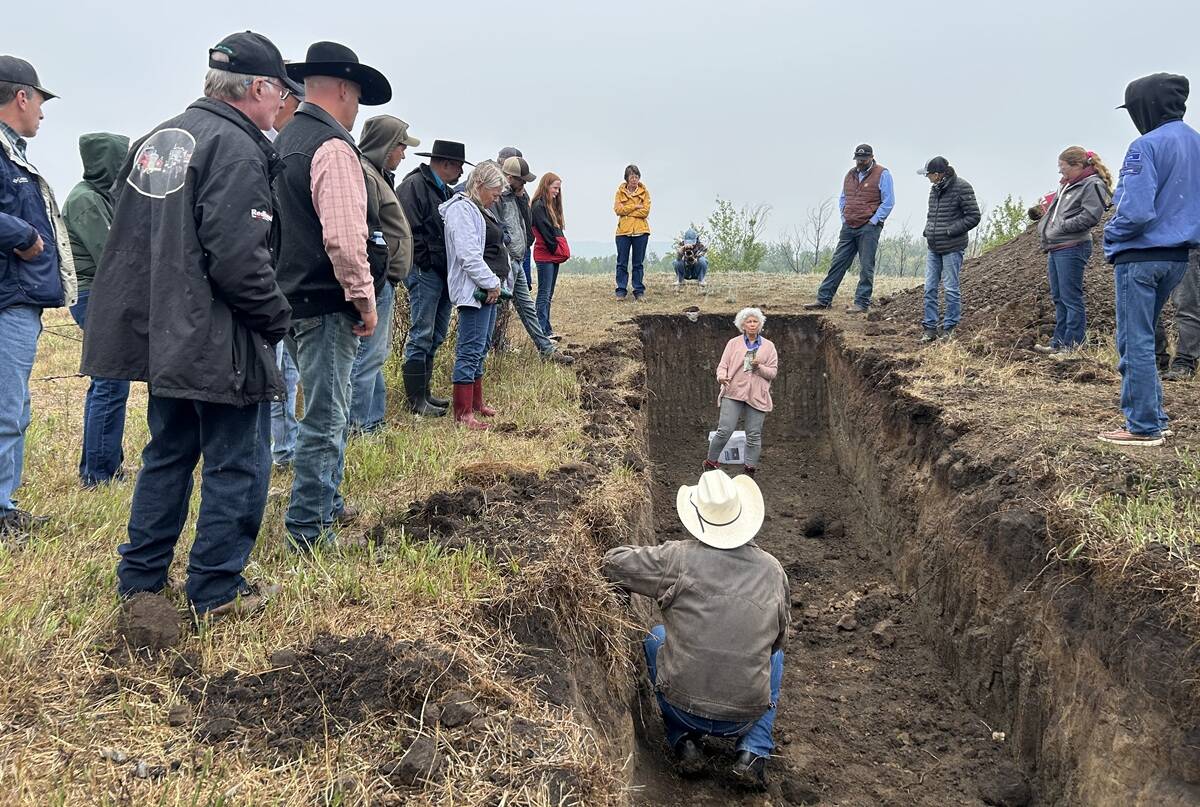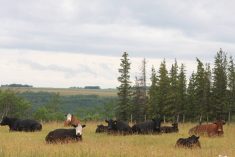Charlie Gracey references the Gordian knot in his article on the producer’s share of the retail dollar in our August issue of Canadian Cattlemen, and I’ve been thinking about it since I first read it.
The Gordian knot has its origins in an ancient Greek legend. An oracle predicted that the next man to drive his ox cart into the city of Telmissus would become the king of the Phrygians. Gordius was the next person to come to town with his ox cart, and so was declared the new monarch. King Gordius’s son, Midas, then proceeded to tie the ox cart to a post using a rat’s nest of knots. The Gordian knot was so complex that no one was able to untie it for years, and an oracle declared anyone able to untangle it would rule all of Asia.
The Gordian knot is seen as a metaphor for complex problems. Even worse are “wicked problems,” which are persistent, complex situations. The term was coined in 1973 by Berkeley profs Horst Rittel and Melvin Webber, who outlined 10 characteristics of wicked problems:
- Unlike ordinary problems, you can’t write a well-defined statement of a wicked problem.
- The search for solutions to a wicked problem never ends.
- Solutions aren’t true or false, but good or bad, relying largely on judgement.
- Solutions create unexpected consequences over time, making it hard to measure their effectiveness.
- Solutions have consequences that can’t be walked back, making every attempt count significantly.
- There’s no clear template or plan to follow. For the most part, you’re going to have to improvise.
- Every wicked problem is unique.
- Every wicked problem is a symptom of another problem. There is no single root cause.
- There is more than one explanation for the problem, and different people have different ideas about what the problem is and what is creating it.
- The person attempting to solve the problem must be fully responsible for their actions.
There is, unfortunately, no shortage of wicked problems in our world today. And the beef industry is facing a fair few Gordian knots and wicked problems, with ranch-level economics being one of the most wicked. It’s a problem that is connected to many other areas, including declining forage acres, input prices, cattle prices, drought and weather risks, lack of effectiveness/uptake in business risk management programs, land costs and many factors. Inflation is not helping, either. Your view on the problem might differ from that of someone in another part of the industry — and you may both be correct because it’s such a complex issue.
Read Also

Improving soil health on the ranch
Yamily Zavala, PhD, talks soil health for farmers and ranchers at a grazing club field day at Paradise Hill, Saskatchewan.
We can also see how some of the proposed solutions to ranch economics reveal more problems. For example, there’s been lots of talk about the need for more packers, as common sense would tell us that more buyers would lead to more competition between those buyers and therefore better cattle prices, alleviating part of the problem. But starting a large packing plant is easier said than done — it takes a huge investment, finding and retaining employees is difficult and it requires a deep knowledge of everything from marketing products to the logistics of running a plant. Smaller plants, selling into local or regional markets, might also help, but they also face some of the same issues as the big plants, such as finding and keeping employees. The building costs for a small plant would be lower, but still substantial, especially for a small company or sole proprietor. Plus, they may not have the same efficiencies as the big plants, which means higher costs.
Don’t get me wrong, I’m not suggesting the industry do nothing. Right now there is a competitiveness study underway in Alberta, initiated by Alberta Agriculture, Alberta Beef Producers, Alberta Cattle Feeders’ Association and the Canadian Cattle Association. It is focusing on three things: barriers to entry and expansion in the packing sector; confidentiality concerns around price transparency in boxed beef prices (in Canada); plus a review of other work and discussions around price discovery in fed cattle in North America, including a look at U.S. proposals and how they’d apply in a Canadian context. Hopefully, that work will yield useful results later this year.
Writing for the Harvard Business Review, John Camillus offered a few tips on corralling wicked problems. He suggests getting stakeholders involved, right from the early stages when you’re trying to figure out the different aspects of the problem. Keep them involved right through to the end, when you’re creating and implementing solutions. Involving more people makes the whole process more complex, but it has several advantages. It creates a shared understanding of the problem, and a commitment to tackle it. It helps develop new perspectives. It “strengthens collective intelligence, which counteracts groupthink and cognitive bias and enables groups to tackle problems more effectively than individuals,” Camillus writes. Camillus also urges an organization to hold true to its sense of purpose when evaluating choices and to experiment with a few feasible options rather than suffering from analysis paralysis or settling on only one strategy.
Finally, when looking at options for managing wicked problems, remember the principle of Occam’s razor, Camillus writes. Don’t overcomplicate things when you can simplify (assuming the simpler route is logical and doesn’t play into confirmation bias). I suppose this is a good thing to keep in mind when deal- ing with problems that are already very complicated.
The second part of the Gordian knot legend is a perfect example of Occam’s razor. Alexander the Great eventually happened upon the oxcart. After puzzling over the knot for a bit, he either pulled the linchpin from the yoke, loosening the knot, or sliced it in half with his sword. Either way, it just goes to show that a little creativity and simplicity can pay off.
Just check that the knot isn’t tied to something that might fall on your head before you cut it.
















